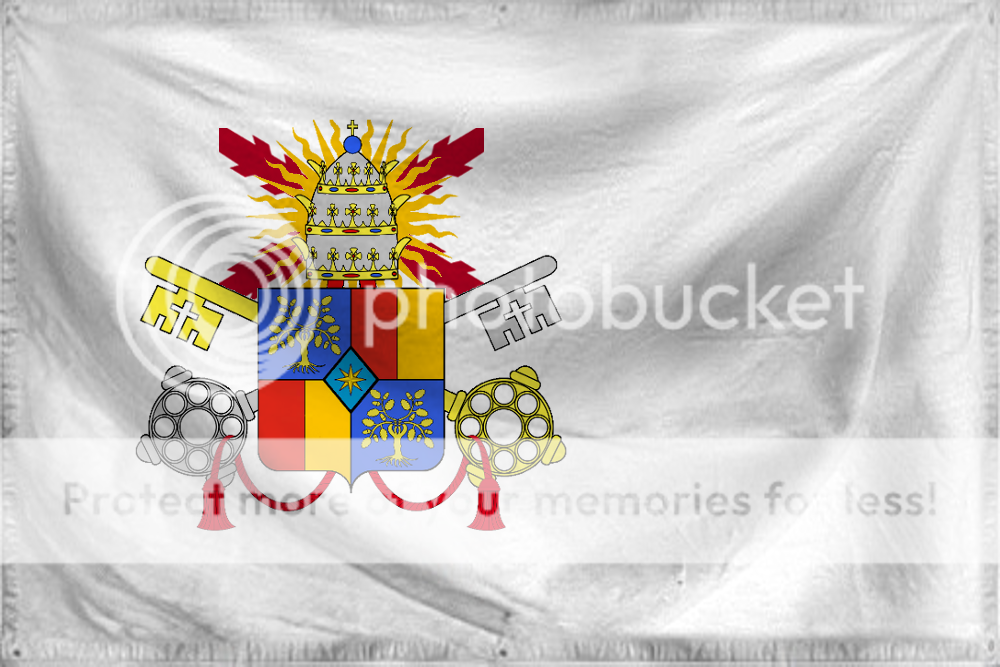Here's my dodgy one:
The Cardinality of Carthage
The Carthage Cardinality has the distinction of being the last Church-run state to come under secular authority...
The St Augustine Basilica was founded in 1333 by the Templars during the so-called African Crusade led by James III of Sicily and was part of Pope Celestine's attempts to depoliticise the Templar Order by providing them a state outside Christian Europe while simultaneously returning Christianity to former Roman lands...
The Templars's efforts to expand their Ordinality [ie Order-State] across North Africa were thwarted not only by the Merinids of Morocco but also by the growing divide between the Cistercian and Dominican branches of the Order itself. Things came to a head during the Papal Schism as each branch, and often chapter, began supporting opposing Popes...
The legendary Siege of St Augustine provided a rallying point for the Reformationists - and it was no doubt a wish to avoid this that led to the Cardinality's surrender 4 centuries later...
The Concilium at Rome established a parliament of Cardinals - the Papal Synod - and disbanded the military orders. Some secularised, becoming local barons or joined the Papal Guard, others joined the Church hierarchy. The Master of Sicily became the first Cardinal of Carthage and thus responsible for the Church in North Africa...
The Cardinality formed a unique governance within the former Templar Ordinality as it consolidated under the Sicilian Crown: the Church and secular princes held joint jurisdiction except that the City of Carthage came solely under the Cardinal's authority with its twin city Tunis under the King's...
The Cardinality of Carthage came to an end with the 2nd Reformation that saw the Western Catholic Church lose its remaining temporal powers.
The Flag
The flag is based on that of the former Ordinality [of The Poor Fellow-Soldiers of Christ & of the Temple of Solomon] but with the Templar Cross replaced by crossed keys & cardinal coronet.

The Cardinality of Carthage
The Carthage Cardinality has the distinction of being the last Church-run state to come under secular authority...
The St Augustine Basilica was founded in 1333 by the Templars during the so-called African Crusade led by James III of Sicily and was part of Pope Celestine's attempts to depoliticise the Templar Order by providing them a state outside Christian Europe while simultaneously returning Christianity to former Roman lands...
The Templars's efforts to expand their Ordinality [ie Order-State] across North Africa were thwarted not only by the Merinids of Morocco but also by the growing divide between the Cistercian and Dominican branches of the Order itself. Things came to a head during the Papal Schism as each branch, and often chapter, began supporting opposing Popes...
The legendary Siege of St Augustine provided a rallying point for the Reformationists - and it was no doubt a wish to avoid this that led to the Cardinality's surrender 4 centuries later...
The Concilium at Rome established a parliament of Cardinals - the Papal Synod - and disbanded the military orders. Some secularised, becoming local barons or joined the Papal Guard, others joined the Church hierarchy. The Master of Sicily became the first Cardinal of Carthage and thus responsible for the Church in North Africa...
The Cardinality formed a unique governance within the former Templar Ordinality as it consolidated under the Sicilian Crown: the Church and secular princes held joint jurisdiction except that the City of Carthage came solely under the Cardinal's authority with its twin city Tunis under the King's...
The Cardinality of Carthage came to an end with the 2nd Reformation that saw the Western Catholic Church lose its remaining temporal powers.
The Flag
The flag is based on that of the former Ordinality [of The Poor Fellow-Soldiers of Christ & of the Temple of Solomon] but with the Templar Cross replaced by crossed keys & cardinal coronet.

